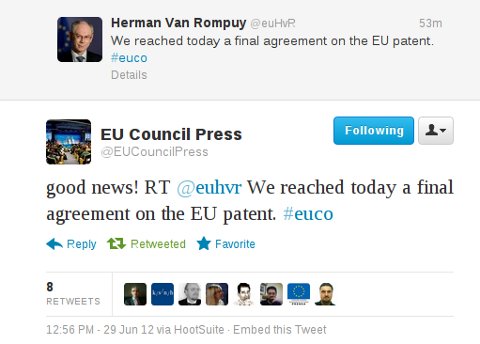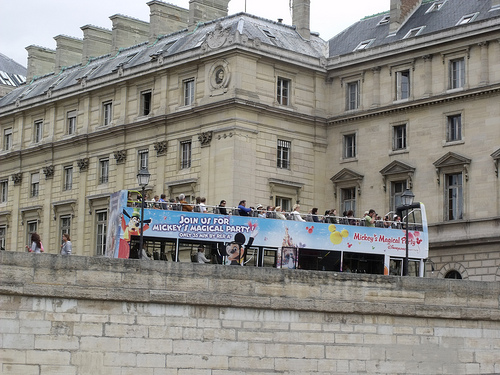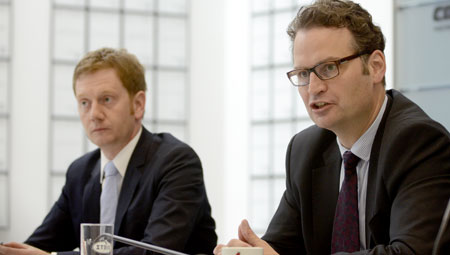As reported here and elsewhere [1, 2, 3], the European Council agreed on the EU Unitary Patent and a EU Unified Patent Court at last week’s Brussels EU summit after volatile negotiations – by ‘suggesting’ two significant amendments (see summit conclusion, page 2, item 3) as compared to what was know from the latest available draft text of the Unitary Patent Regulation dated 23 June 2011 (see here and here).
EU Court of Justice: The more severe one of those amendments that apparently was pushed through by UK Prime Minister David Cameron to please his eurosceptics allies at home, demands
that Articles 6 to 8 of the [Unitary Patent] Regulation [...] to be adopted by the Council and the European Parliament be deleted
essentially meaning that substantive EU patent law will not any more be subject to legal order of the Union highest court, the European Court of Justice (CJEU). I share my colleague’s view that this is nothing less than “an open declaration of deep mistrust, if not political warfare of significant parts of the UK conservatives against the CJEU and thus the European Union as a whole.
This move, however, could not escape the eyes of the European Parliament, which originally wanted to nod through this matter tomorrow (4 July 2012) whereas meanwhile the item was removed from the agenda under the harsh critics of rapporteurs Bernard Rapkay (S&D, DE) and Klaus-Heiner Lehne (EPP, DE): “scandalous breach of procedure“, “oriental bazaar” (did they read this item?), ”case would go straight to the European Court of Justice“. Due to the Council’s amendments, the first reading is thus rendered null and void.
It appears that the proudness of the Danish Presidency as well as the official cries of joy of e.g. EPO President Benoît Battistelli (“historic breakthrough“) and EU Commissioner Michel Barnier (“decisive step“) came far too early while stakeholders ask themselves if this mess could not have been prevented by a more transparent process, more cooperation with the potential system users, less political tactics, and less national egoisms and horse trading. It is depressive to say, but if the implementation of a reasonable EU patent system was the litmus test for Europe’s capacity for efficient policy-making, the conclusion can only be that the striking deficiencies of the EU’s political management appear to be insurmountable.
As we had reported earlier, the European Council summit last week held in Brussels reached a compromise on long-debated plans to create an enhanced co-operation amongst EU Member States minus Italy and Spain aiming at creating a Unitary Patent plus a corresponding Unitfied Patent Court (UPC).
According to the Lisbon Treaty, the European Parliament is actively involved in the making of a Regulation of the Council and the European Parliament implementing enhanced cooperation in the area of the creation of unitary patent protection (last known published text in Document 11328/11 dated June 23, 2011).
Furthermore, the European Parliament is invited to adopt or reject an agreement on a Unified Patent Court without being actively involved in drafting it (last known published text in Document 13751/11 dated September 02, 2011)
In November 2011, JURI Legal Affairs Committee of the European Parliament mandated three Rapporteurs – Bernhard Rapkay (S&D, Germany), Raffaele Baldassarre (EPP, Italy), Klaus-Heiner Lehne (EPP, Germany) – (see agenda, nos. 33, 34, 35) to negotiate the agreement on the Unitary Patent and the related Language Regime with the European Council in back rooms behind closed doors. (see e.g. press release as well as press reports [1] and [2]).
These back room activities apparently were successful, at least in a technical sense. An informal consensus was reached between representatives of the EU Commission, the EU Council, and EU Parliament, however which – as far as I know – has not been published yet.
In February 2012, the JURI Legal Affairs Committee of the European Parliament finalised their report on these matters but the plenary vote was postponed because of the question of where the central division of the Court shall be seated was still left unanswered in those days.
The general expectation was that the package consisting of the Regulation of the Council and the European Parliament implementing enhanced cooperation in the area of the creation of unitary patent protection, the Regulation implementing enhanced cooperation in the area of unitary patent protection with regard to the applicable translation arrangement and the agreement on a Unified Patent Court shall not be unbundled thereafter. Only the precise indication of the seat of the central division was envisaged to be inserted into the text of the agreement on a Unified Patent Court.
But the Heads of Government and/or State assembled at the European Council summit last week preferred to proceed differently. They obviously have unbundled the previously agreed package again not only by “suggesting” (whatever that means) that Articles 6 to 8 of the Regulation implementing enhanced cooperation in the area of the creation of unitary patent protection to be adopted by the Council and the European Parliament be deleted, and, not spoken out explicitly, be re-introduced into the Court agreement. Moreover, also the rules governing the accessibility of the central division vis-a-vis the regional chambers have been altered.
A precise idea as how to implement this has already been noted down in EU Council Document 11959/12 titled Proposal for a Regulation of the European Parliament and the of the Council implementing enhanced cooperation in the area of the creation of unitary patent protection – Approval of an amendment to the final compromise text, which however, is not accessible to the general public. Cowardly as our political elite meanwhile appears to be, they more and more get used to withhold crucial documents like this, thereby uttering flimsy excuses to the effect that they never would be able to ever reach an agreement if the contents thereof is widely known – or something similar.
But behind the scenes, clouds are gathering in the European Parliament. This week sessions will be held in Strasbourg, and just now when I am writing this posting the MEPs probably are hurrying to get to the Parliament premises there in order to be present in time when deliberations begin.
Continue reading »
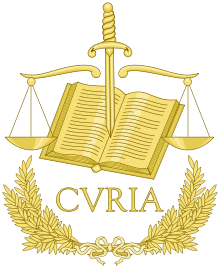 As reported, last week’s European Council summit has reached an agreement on the EU Unified Patent and a EU Unified Patent Court after volatile negotiations on 29 June 2012.
As reported, last week’s European Council summit has reached an agreement on the EU Unified Patent and a EU Unified Patent Court after volatile negotiations on 29 June 2012.
The EU Council thus made a big step forward on its way to achieve the final goal, as expressed in the annex of Doc 10059/12 of 24 May 2012:
On the 1st of April 2014 the system should be ready for the first registration of a European patent with unitary effect.
However, a number of steps – and one big legal problem – still remain to be taken. Already this July, the EU Parliament will have its first plenary session on the EU Patent Package that was postponed on 19 December 2011 by JURI (cf. minutes) and the EU Council will consider the issue as well:
- 3./4. July 2012: Parliamentary deliberations and votes on the three aspects of the “EU Patent Package” (unitary patent, translation arrangement, unified patent court);
- July 2012: Adoption of the Unitary Patent Regulation (unitary patent, translation arrangement) by the EU Council.
But it cannot be expected that the process will run smoothly, as the top-level negotiations at last week’s EU Summit ‘suggested’ – apparently under the pressure of David Cameron and eurosceptic Tory MPs lead by Bill Cash, Chairman of the influential Scrutiny Committee and ‘herald of the apocalypse‘ -
that Articles 6 to 8 of the [Unitary Patent] Regulation [...] to be adopted by the Council and the European Parliament be deleted.
Reports are coming in saying that the European Council summit indeed has reached an agreement on the project of creating a EU Unified Patent plus a corresponding court system, namely a EU Unified Patent Court.
In this context, EU of course merely means enhanced co-operation, i.e.full EU minus Italy and Spain, the governments of which have opted out earlier due to their unwillingness to accept a language compromise reached by a large majority (see here and there). And, Italy and Spain have challenged the validity of the application of the enhanced co-operation procedure with regard to the Unitary Patent before the Court of Justice of the EU; see cases C-274/11 (Kingdom of Spain against Council of the European Union) and C-295/11 (Italy against Council of the European Union), respectively, which are still pending.
In January 2012 it looked as if most or all of the issues related to a political package comprising a EU Regulation creating a EU Unitary Patent, a EU Unified Patent court and a corresponding language regime are basically solved except, well, except the question of where the central division of the new Court shall be seated.
Earlier today, reports were emerging that a compromise proposal fostered by the President of the European Council, Mr Herman Van Rompuy, on the disputed location of the central division of the planned Unified Patent Court (envisaging that all contenders Paris, London and Munich would get their share) was about to falter:
Continue reading »
Some days ago we reported on a press report basically saying that Munich has been dropped out of the hard fought race for the seat of the Central Division of the future EU Unified Patent Court:
[...] Munich seems to be out of the running, Paris appears to be the favourite and London could win a few laurels.
Paris as the court location appears to be backed by the President of the EU Council, Herman Van Rompuy, while it is speculated that
[t]he smart money appears to be on Paris at the moment, but diplomats warn that it’s still anyone’s guess whether a deal will be reached.
Now, on the eve of the decisive EU Summit, another article clarifies that Van Rompuy’s compromise plan, being the “result of consultation with the most concerned member states”, in fact proposes to share the location of the court between Paris, London and Munich. According to this plan, the official seat of the court’s central division, its president’s office and registry will reside in Paris, while some departments will be based in London and in Munich:
Given the highly specialised nature and quality standards, we also propose to create specialised clusters in two sections of the UPC, one in London, the other in Munich, which will continue to deal with administrative matters.
As the wording ‘administrative matters’ appears to exclude – for now – that court chambers will be established in London or Munich, one may ask what kind of administrative support can be given by Munich and London if even the registry is bound for Paris.
However, even though all these rumours cetrainly have a core of truth, it is also true that the race will not be decided by ‘smart money’ but by the EU Heads of Government on the EU Summit on 28/29 June 2012. It is further true that the outcome will highly depend on and be strongly linked to the much more important negitiations as to how the EU depth crisis can be effectively tackled. And this central issue will be dominated by the antagonism between the EU leaders who dramtically proposed a ‘Grand Plan‘ (pdf here) to safe the eurozone and Federal Chancellor Angela Merkel, who is prepared to rule out eurobonds “as long as I live“. Hence, there remains plenty of room for discussion and compromise – also on the seat issue.
(Photo 2009 by El Brown via Flickr under a CC license)
BREAKING: EU Unified Patent Court – Munich Dropped Out?
The EU summit (European Council) scheduled to be held in Brussels on June 28-29 is approaching, and there is some expectation that on that event there will be sort of a make-or-break decision concerning the planned EU Unitary Patent together with the treaty for creation of the EU Unified Patent Court.
It is well known that the entire problem is already politically reduced to the issue of finding a seat for the central division of the Court.
Contenders are Munich, Paris and London.
In preparation of the summit, Mr Herman Van Rompuy, President of the European Council, and COREPER (Committee of Permanent Representatives) are extremely busy to stage some sketch for a solution which might then get rubber-stamped by the Heads of Government conferencing in Brussels next week.
In this situation Ms Sophie Mosca reports in Europolitics that Munich seems no longer to be on the shortlist, Paris appears to be the favourite and London could win some support functions for the Paris facilities.
Of course there is no official confirmation available, and if this message is true, it is still subject to the approval of the European Council by end of next week.
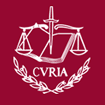 Just today the Court of Justice of the European Union (CJEU) have published their final judgement in case C-307/10 IP Translator. The main findings are (emphasis addeed):
Just today the Court of Justice of the European Union (CJEU) have published their final judgement in case C-307/10 IP Translator. The main findings are (emphasis addeed):
Directive 2008/95/EC of the European Parliament and of the Council of 22 October 2008 to approximate the laws of the Member States relating to trade marks must be interpreted as meaning that it requires the goods and services for which the protection of the trade mark is sought to be identified by the applicant with sufficient clarity and precision to enable the competent authorities and economic operators, on that basis alone, to determine the extent of the protection conferred by the trade mark.
Directive 2008/95 must be interpreted as meaning that it does not preclude the use of the general indications of the class headings of the Classification referred to in Article 1 of the Nice Agreement Concerning the International Classification of Goods and Services for the Purposes of the Registration of Marks, concluded at the Nice Diplomatic Conference on 15 June 1957, last revised in Geneva on 13 May 1977 and amended on 28 September 1979, to identify the goods and services for which the protection of the trade mark is sought, provided that such identification is sufficiently clear and precise.
An applicant for a national trade mark who uses all the general indications of a particular class heading of the Classification referred to in Article 1 of the Nice Agreement to identify the goods or services for which the protection of the trade mark is sought must specify whether its application for registration is intended to cover all the goods or services included in the alphabetical list of that class or only some of those goods or services. If the application concerns only some of those goods or services, the applicant is required to specify which of the goods or services in that class are intended to be covered.
Continue reading »
EU Unitary Patent / Unified Patent Court: The Final Showdown Is Nigh
Recently Document 10059/12 originating from the Danish EU Presidency and dated May 24, 2012, has been released to the public. It is titled Draft Agreement on the creation of a Unified Patent Court – Suggested way forward for a political agreement and addresses Permanent Representatives Committee (Part 1) / Counci (COREPER1). The Document re-iterates that, according to the Danish Presidency, the creation of unitary patent protection and the Unified Patent Court are key drivers for strengthening economic growth and job-creation in the European Union and cornerstones in building a strong science base in Europe.
Again according to that Document, on December 05, 2011, the Competitiveness Council had an exchange of views on the last outstanding issues regarding the creation of a Unified Patent Court based on Document 18239/11. At the end of those discussions, and while keeping in mind that nothing is agreed until everything is agreed, delegations had reached a general agreement on all but one outstanding issue, namely the place where the seat of the Central Division of the Court of First Instance will be situated.
No substantial portions of Document 18239/11 have been released yet; the heavily redacted published version only discloses some points of interest as follows:
- Renewal fees
- The financial contribution of the Member States hosting a local division, a regional division, the central division of the Court of 1st Instance or the Court of Appeal
- Other financial contributions of the Member States
- Court’s fees
- Language of proceedings
- Actions to be brought to the central division
- Transitional period
- Revision clause
- Number of ratifications required for the entry into force
- Breeders’ privilege
- Local divisions
- The seat of Central Division of the Court of 1st Instance, the seat of the Court of Appeal with the Registry and the seat of the Patent Mediation and Arbitration Centre
You will note that apparently the issue of the rights of European Patent Attorneys to represent their Clients is not mentioned on this list.
Now back to Document 10059/12. This text further discloses that at an informal meeting of the members of the European Council on January 30, 2012, the participating Member States (i.e. all EU Member States except ES, IT) stated their commitment towards reaching a final agreement on the European patent reform at the latest in June 2012. This commitment was confirmed by the European Council on March 01-02, 2012, and by the members of the European Council on May 23, 2012. Based on the common understanding that the texts of the draft Agreement on a Unified Patent Court and of the draft Statute of that Court have been thoroughly discussed under the Polish Presidency, the Danish Presidency is reported to have undertaken intensive consultations, aimed at reaching a compromise on the last outstanding issue concerning the seat of the Central Division. As a follow up on these consultations, the Danish Presidency invited the delegations of the participating EU Member States to discuss the location of the seat of the Central Division of the Court of First Instance with a view to reaching a political agreement.
Finally, reference is made to the fact according to which the Competitiveness Council on December 05, 2011, the participating Member States reached general agreement on a draft declaration of the contracting Member States concerning the preparation for the coming into operation of the Unified Patent Court, as contained in Document 17580/11 (Document again heavily redacted, little substantial disclosure). In response to several Member States having expressed the need for further clarification on the process following a political agreement on the patent package, the Danish Presidency now circulates a draft statement originating from the Danish Presidency but apparently also supported by the incoming Cypriot Presidency on the process following such a political agreement, as set out below:
Continue reading »
On an Official blog website blogfraktion.de of the parliamentary group of the Christian Democratic Union / Christian Social Union (CDU/CSU) in the German Bundestag I recently stumbled upon a green paper concerning copyright in the digital society (Diskussionspapier der CDU/CSU-Bundestagsfraktion zum Urheberrecht in der digitalen Gesellschaft) presented by Deputy Party Whips Mr Michael Kretschmer and Mr Günter Krings. While the main topic of this text, of course, is directed to copyright issues, we also can find a single paragraph devoted to so-called software patents or, more technically, patents on computer-implemented (respectively implementable) inventions as follows (I did some plain copy/paste operation and refrain from correcting spelling errors in the German original):
8. Urheberrecht statt Softwarepatenten
Computerprogramme werden richtigerweise durch das Urheberrecht geschützt. „Softwarepatente“ auf Quell-Codes laufen dem urheberrechtlichen Schutzzweck zuwider. Der urheberrechtliche Schutz ist flexibler und innovationsfördernder, weil dazu kein aufwendiges und teures Patentierungsverfahren notwendig ist. Die Anwendbarkeit des Urhebervertragsrechts stärkt außerdem die Programmierer (Urheber) gegenüber den Softwarefirmen (Verwertern).
Ein Richtlinienvorschlag der EU-Kommission, eine EU-einheitliche Patentierungspraxis für Software zu schaffen, ist 2002 gescheitert. Die CDU/CSU-Bundestagsfraktion lehnt auch weiterhin jede Ausweitung der Patentierungspraxis im Softwarebereich ab.
I would like to offer my own translation as set out below:
8. Copyright instead of software patents
Computer programs are rightly protected by copyright. “Software patents” on source code run contrary to the purpose of protection by copyright. Protection by copyright is more flexible and encourages innovation more because it does not require intricate and expensive patenting proceedings. Moreover, the applicability of the [German] law of contracts on copyrights strengthens the coders (creators) compared to software companies (exploiters).
A Draft proposal of the EU Commission for creating a unitary practice of patenting of software has failed in 2002. The parliamentary group of the CDU/CSU in the Bundestag maintain their rejection of any broadening of the practice of patenting in the field of software.
The first sentence of this statement asserting that computer programs are rightly protected by copyright is one of the few snippets of information from the text as quoted above which is by and large correct insofar historically the Council Directive 91/250/EEC of 14 May 1991 on the legal protection of computer programs had stipulated in its Article 1 that Member States shall protect computer programs, by copyright, as literary works within the meaning of the Berne Convention for the Protection of Literary and Artistic Works. However, the term “rightly” (“richtigerweise” in German) might, at least for German ears, be construed like suggesting that software protection by copyright is the only (proper and legitimate) way to define software-related Intellectual Property. This is not true. Article 9 paragraph 1 of the Directive says (emphasis added):
The provisions of this Directive shall be without prejudice to any other legal provisions such as those concerning patent rights, trade-marks, unfair competition, trade secrets, protection of semi-conductor products or the law of contract. [...]
In the next sentence: “Software patents” on source code run contrary to the purpose of protection by copyright, a stark theory is proclaimed deepening this initial stub of mis-understanding the law by setting forth in more detail there is sort of a contradiction between copyright and patent law. In fact, copyright law and patent law are mapped to different aspects of computer software, respectively:
- From a copyright-centred point of view, a computer program is seen as a text (source code).
- From a patent-centred point of view, a computer program is seen as an expression of functionality or of dynamic semantics described by operational and/or denotational semantics, i.e. it is viewed as an expression of run-time behaviour.
Copyright and patent rights can emerge from one and the same set of facts of a case. This phenomenon is not confined to copyright and patent law concerning software. Take, for example, a mud wing of a car:
Continue reading »
To answer the above question right away, I do not hope so because otherwise the future of the European Community/Union, the great idealistic and visionary European project, would lie in ruins already. As a patent professional and keen enthusiast of the European idea, please allow me to share some personal comments based on the findings of my earlier posting on the Deficiencies of the EU Legislative Process for Implementing a Unified Patent Infrastructure, namely
- ignorance as to users and experts and their (mostly) well-founded observations;
- a striking lack of transparency preventing public involvement;
- an information policy that disguises more than it discloses; and
- national egoisms, inappropriate horse-trading and power games.
As already expressed earlier, I think that these frightening mechanisms and structural deficiencies of the European policy-making process may endanger stability and acceptance of and confidence in the European Union as a whole. As none of those features is adequate for a democratic legislation process in a cooperating Europe, the conclusion might be that Europe’s democracy is in danger. This, apparently, is at least the opinion of Mr Martin Schultz, President of the European Parliament, who recently demanded that a “restart” of European democracy is required, as “the Union must make the decision-making process more transparent so that a genuine European public sphere can emerge”. Well roared, lion!
The k/s/n/h::law blog
Some of the patent attorneys of the KSNH law firm have joined their efforts to research what is going on in the various branches of IP law and practice in order to keep themselves, their clients as well as interested circles of the public up to date. This blog is intended to present results of such efforts to a wider public.
Blog Archives
- November 2013 (2)
- October 2013 (1)
- September 2013 (1)
- August 2013 (2)
- July 2013 (3)
- June 2013 (5)
- March 2013 (5)
- February 2013 (4)
- January 2013 (5)
- December 2012 (5)
- November 2012 (5)
- July 2012 (5)
- June 2012 (8)
- May 2012 (5)
- April 2012 (3)
- March 2012 (4)
- February 2012 (5)
- January 2012 (6)
- December 2011 (12)
- November 2011 (9)
- October 2011 (9)
- September 2011 (4)
- August 2011 (7)
- July 2011 (4)
- June 2011 (1)
Blog Categories
- business methods (6)
- EPC (7)
- EPO (12)
- EU law (92)
- ACTA (8)
- CJEU (4)
- Comitology (1)
- competition law (2)
- Enforcement (6)
- EU Unified Patent Court (62)
- FTA India (1)
- TFEU (2)
- Trade Marks (5)
- European Patent Law (37)
- German Patent ACt (PatG) (1)
- German patent law (5)
- Germany (6)
- Pirate Party (3)
- International Patent Law (4)
- PCT (2)
- IP politics (10)
- licenses (2)
- Litigation (5)
- Patentability (7)
- Patents (12)
- Piratenpartei (2)
- Software inventions (10)
- Uncategorized (9)
- Unitary Patent (24)
- US Patent Law (4)
Comments
- kelle on Germany: Copyright Protection More Easily Available For Works Of “Applied Arts”
- Time Limits & Deadlines in Draft UPCA RoP: Counting The Days - KSNH Law - Intangible.Me on Wiki Edition of Agreement on Unified Patent Court Agreement (UPCA)
- Time Limits & Deadlines in Draft UPCA RoP: Counting The Days | ksnh::law on Wiki Edition of Agreement on Unified Patent Court Agreement (UPCA)
- Wiki Edition of Agreement on Unified Patent Cou... on Wiki Edition of Agreement on Unified Patent Court Agreement (UPCA)
- European Commission Takes Next Step Towards Legalising Software Patents in Europe | Techrights on EU Commission publishes Proposal of amendend Brussels I Regulation for ensuring Enforcement of UPC Judgements
Blogroll
- 12:01 Tuesday
- America-Israel Patent Law
- Anticipate This!
- AwakenIP
- BlawgIT
- BLOG@IPJUR.COM
- BP/G Radio Intellectual Property Podcast
- Broken Symmetry
- Class 46
- Director's Forum: David Kappos' Public Blog
- Gray on Claims
- I/P UPDATES
- IAM Magazine Blog
- Intellectual Property Intelligence Blog
- IP Asset Maximizer Blog
- IP CloseUp
- IP Dragon
- IP Watch
- IP Watchdog
- IPBIZ
- ipeg
- IPKat
- ITC 337 Law Blog
- Just a Patent Examiner
- K's Law
- MISSION INTANGIBLE
- Patent Baristas
- Patent Circle
- Patent Docs
- Patently Rubbish
- PatentlyO
- Patents Post-Grant
- Reexamination Alert
- SPICY IP
- Tangible IP
- The 271 Patent Blog
- The Intangible Economy
- THE INVENT BLOG®
- Think IP Strategy
- Tufty the Cat
- Visae Patentes
The KSNH blogging landscape


This blog and the German-language sister blog k/s/n/h::jur link to the two popular and privately run blogs IPJur und VisaePatentes and continue their work and mission with a widened scope and under the aegis of our IP law firm.
ksnhlaw on Twitter
- No public Twitter messages.
 KSNH::JUR Feed (german)
KSNH::JUR Feed (german)- Ist Verschlüsselung passé? September 6, 2013Auf verschiedenen Feldern beruflicher Praxis ist dafür zu sorgen, dass Kommunikation vertraulich bleibt. Die trifft beispielsweise für Ärzte zu, aber auch für Anwälte, darunter auch Patentanwälte. Einer der zahlreichen Aspekte, die in diesem Zusammenhang eine Rolle spielen, ist die Technik, um die Vertraulichkeit beruflicher Kommunikation sicherzustellen. Wa […]
- EU-Einheitspatent: Demonstrativer Optimismus und Zahlenmystik allerorten – Naivität oder politische Beeinflussung? June 26, 2013Nach mehreren vergeblichen Anläufen zur Schaffung eines EU-weiten Patentsystems wurde 1973 als Kompromiss das Europäische Patentübereinkommen unterzeichnet, welches unabhängig von der seinerzeit noch EWG genannten Europäischen Union System zur zentralisierten Patenterteilung mit nachgeordnetem Einspruchsverfahren durch das Europäische Patentamt schuf. Wie wi […]
- Moderne Zeiten oder: DPMA und Patentgericht streiten über die elektronische Akte April 25, 2013Bekanntlich hat das Deutsche Patent- und Markenamt (DPMA) im Jahre 2013 mit der rein technischen Fertigstellung der Einrichtungen zur elektronischen Akteneinsicht einen wichtigen Meilenstein seines Überganges von der Papierakte zur “elektronischen Akte” erreicht. Im DPMA werden aber bereits seit dem 01. Juni 2011 Patente, Gebrauchsmuster, Topografien und erg […]
- Gutachten zu Forschung, Innovation und technologischer Leistungsfähigkeit Deutschlands 2013 March 11, 2013Unter dem Datum vom 28. Februar 2013 ist die Bundestags-Drucksache 17/12611 veröffentlicht worden Sie trägt den Titel Unterrichtung durch die Bundesregierung - Gutachten zu Forschung, Innovation und technologischer Leistungsfähigkeit Deutschlands 2013. Die Bundesregierung legt dem Deutschen Bundestag seit dem Jahr 2008 […]
- 3D-Printing: Zum Filesharing von 3D-Modelldaten February 25, 2013In meiner kleinen zuvor angekündigten Reihe über rechtliche Aspekte des 3D Printing komme ich heute auf die Frage zu sprechen, ob die Hersteller von Gerätschaften es hinnehmen müssen, wenn Ersatztreile davon – vom Brillengestell über Smartphone-Gehäuseteile bis hin zu Rastenmähermotor-Abdeckungen – gescannt und die daraus […]
- Ist Verschlüsselung passé? September 6, 2013


